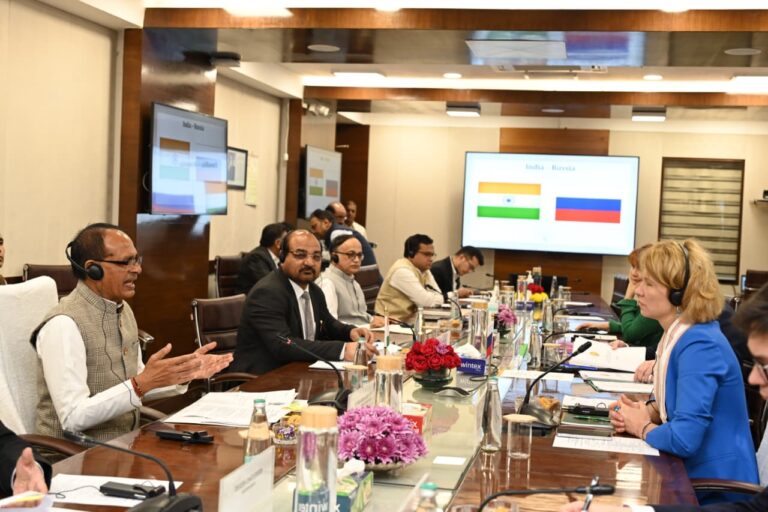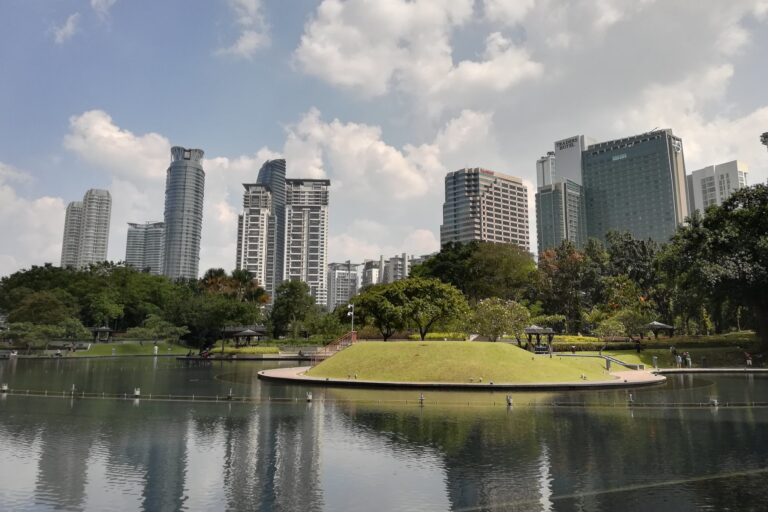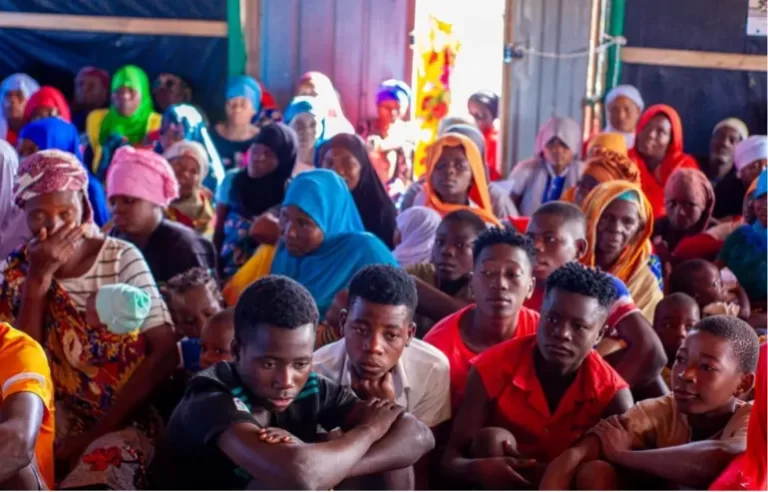
State Elections-2021: West Bengal
 By Prof Ujjwal K Chowdhury*
By Prof Ujjwal K Chowdhury*
Ten things that define the West Bengal state polls
Kolkata: West Bengal goes to elect its new state government by May 2, 2021, and an unprecedented 8-phase election over 33 days has been declared by the Election Commission. The state with around 10 crores population, with 7.32 crores voters, with lacs more male voters, and with a per capita income of Rs.11,000 a month, and State GDP growth being 14.5% in 2018 and literacy rate of 76%, now goes to the polls, that is expected to be the most intense and violent in recent Indian history.
As on today, all the opinion polls done till date give Mamata Banerjee led Trinamool Congress a clear lead over the nearest rival, the Bharatiya Janata Party, followed by the Left-Congress alliance, allowing Didi, as Mamata is popularly called, to form the government for the third time.
As per a survey, which was conducted days ahead of the poll announcement, Mamata Banerjee-led TMC was projected to return to power by bagging somewhere between 148 to 164 seats in the 294-member legislative assembly. The TMC, however, was expected to get a close competition with the BJP, which is expected to increase its tally in the state assembly by winning somewhere close to 92-108 seats.
It is to be noted that the saffron party managed to win only 3 seats in West Bengal in the 2016 Assembly polls. The average of 7 opinion polls done from December to February 2020-21 show that the TMC is ahead with 141 seats, the BJP with 128, the Left-Congress with 22 seats, which throws up a hung Assembly with 148 being the magic figure, and is not close to comfort for either of the two leading parties. This makes the election closely watched.
The factors that will determine the final outcome of the election are as follows.
8-phase voting with Central Forces
The long drawn 8-phase election has been criticised by Mamata, who alleges that the schedule is done to benefit the BJP, to bring in a massive pool of central forces who would be touring the state from one phase to the other, and to make the state police infructuous and thereby to help the BJP surreptitiously. The BJP has responded by saying that this undesirable long schedule has been done to ensure free and fair polls and ensure security of the people.
The women factor
The women constitute around 49% of the voters in Bengal. More than 33% TMC MPs and MLAs are women. For the upcoming assembly election, the TMC’s campaign has been growing aggressively and women are at the centre of it. The ruling party is aware that the women voters could play a decisive role in this election, just like in the recently completed Bihar poll.
The TMC’s appeal to the women electorate is not just limited to campaigns and speeches, the Mamata government over the past 10 years has specifically targeted women and girls through its policies. The most talked about among them is Kanyashree scheme launched in 2013, which provides cash handouts to girls between 13 and 18, provided they remain unmarried and in school. The broader aim of the scheme is to prevent child marriage and reduce school drop-out rate among girls. The scheme also won the United Nations Public Service Award at The Hague in 2017. Another scheme called Rupashree, launched in 2018, provides a one-time financial grant of Rs.25,000 to economically stressed families at the time of their adult daughters’ weddings. This scheme too aims to deter child marriages. Swasthya Sathi, the health insurance scheme, offers a family health card issued in the name of the household matriarch.
The Bharatiya Janata Party has, meanwhile, mobilised its Mahila Morcha in the state, proving that the election could well play out on the crucible of gender politics.
TMC members’ defection to the BJP
At least 25 MLAs and MPs of TMC have joined the BJP in recent times. Of them, former ministers Shuvendu Adhikary and Rajiv Bandopadhyay have reasonably strong personal impact on their voters across 3 to 4 districts, and that has been a major gain for BJP in this poll season. There are several former TMC leaders who are now in BJP, like Sabyasachi Dutta, Arjun Singh and Sanku Panda, who were identified with syndicate-raj, violence, hafta-collection et al.
Undeterred, TMC has gone ahead and noted that it will drop more than half of its sitting MLAs also. The party is planning to nominate more youths, women, and leaders with clean image and acceptability in their area, as per their latest statement. Time will tell how much has the party been weakened by the desertion of its leaders. This is one single unknown factor which will make or break TMC as the jury is wide open on the question of whether it has been weakened by recent and continuing desertions.
The Peerjada factor and Muslim votes
Over the past two years, Peerzada Abbas Siddiqui, head of the Furfura Sharif dargah in Bengal, has often been in the news — sometimes making inflammatory speeches and on other occasions, being assaulted by the Trinamool Congress cadre. Recently, the 34-year-old religious leader announced the establishment of a new party called the Indian Secular Front that will contest all seats in the upcoming Assembly elections in Bengal, and in partnership with Owaisi’s AIMIM. Thereafter, he changed stance and appeared along with the Left and Congress in their massive show of strength on February 28, in the Brigade Maidan. There he also criticised the BJP and Mamata for being on the same page and dividing Hindus and Muslims for electoral benefits, and even abused Congress for what he considered their past follies.
It is unclear as to how much impact Peerjada will actually make in the EVM machine, but surely there is a challenge to Mamata Banerjee here. If the election takes a sharp communal turn and BJP ups its antenna on Hindu-Muslim rhetoric, there will be a counter-consolidation of Muslims in favour of TMC and Peerjada may not go beyond peripheral impact. The Muslims in Bengal, according to 2011 census, were 2.47 crores, 27% of the total population, which in the last one decade has surely increased. Estimates vary from 30 to 35% of the population today and they are a decisive factor in at least 100 out of 294 seats.
The ‘Left-Congress’ Hindu votes
The latest election in Bengal was the 2019 Parliamentary Election, in which TMC received 43.3% of votes (with 22 seats), BJP 40.2% (with 18 seats), Cong-Left Alliance 11.9% winning 2 seats. In the last Assembly polls in 2016, TMC won in 211 seats with 45.2% votes, BJP won in 3 seats polling 10.6%, Left-Congress won in 76 seats polling around 39.5% votes.
This obviously shows that the BJP has primarily gained at the cost of Left-Congress support-base. While their Muslim support-base decidedly voted for Mamata, their large part of Hindu support-base (also a few Hindu supporters of TMC) voted en masse for the BJP in 2019 when it was the question of the central government selection and with the incumbent PM Narendra Modi as the face. In this, it is to be further noted that the Left came down to a paltry 6% of Bengal votes and could not have even one MP elected from Bengal in 2019.
With the Left-Congress consolidation in a better stage than in 2019, with the polls now being of the state, with the show of strength on February 28 being quite impressive, can the Left-Congress get back a part of its past vote-base? If their Muslim voters go back to them, Mamata loses. But if their Hindu voters, much larger in numbers, go back to them, BJP is bound to lose. This is another completely uncertain factor. Interestingly, Left-Congress doing well may actually resurrect Mamata in many seats recently lost to Congress during Lok Sabha polls.
Matua community and CAA
Matuas trace their ancestry to East Bengal, and many of them entered West Bengal after the Partition and after the formation of Bangladesh. The community is important for a number of reasons. Matuas are Namasudras, a Scheduled Caste group, with a presence in at least six parliamentary and 42 Assembly seats. While no official count is available, community leaders put their population at 3 crore, while a State Minister said there are 1.75 crore Namasudra voters. Since 2009, the Matuas were mostly known to be Trinamool Congress supporters; Chief Minister Mamata Banerjee is seen to be close to Boro Ma and the TMC has fielded members of her family in elections. However, the family has been divided over its political leanings in recent years.
Initially behind the Congress, the community turned to the Left Front from 1977 but was disillusioned again, as citizenship and land rights eluded many. In 2009, Left leaders and Mamata separately approached Boro Ma, who chose the latter. In 2010, Boro Ma made Mamata the chief patron of Matua Mahasabha; in 2011, the government provided grants to spruce up Kamonasagar, the community’s holy pond in Thakurnagar. In 2018, Mamata visited Boro Ma and the government later announced a welfare board for Matuas. Boro Ma’s son Kapil Krishna Thakur won the Bangaon Lok Sabha on a Trinamool ticket in 2014. After his death, his wife Mamata Thakur won the seat. Her rival was also from the family — Subrata, another grandson of Boro Ma, and in the BJP. Subrata’s father Manjul Krishna Thakur (Boro Ma’s son) was a Trinamool minister of state but later he and Subrata joined the BJP.
So, while the TMC cannot claim full Matua support anymore, the BJP cannot also command their entire patronage. The BJP is trying to make do with Citizenship Amendment Act promising citizenship to Matuas, while TMC is listing its welfare activities for them and telling what more CAA can bring when Matuas are voters, getting ration, and having educational and job rights, and owning property, etc. The narrative that wins is yet to be seen.
Duarey Sarkar, Health Insurance, et al
Governance at door-steps (Duarey Sarkar): some 18-odd government schemes and pending issues can be solved with the government officials coming to your doorsteps, meaning in your locality in the nearest government office. This was taken up by the TMC government in December and January last to reach out to the entire population physically, virtually and telephonically. Health card for each family with Rs.5 lacs worth treatment assured irrespective of the family background, has also been ensured by now in the process, and in contrast with Ayushman Scheme of the Centre, which requires several socio-economic conditions to be fulfilled to put in a claim of benefit.
Earlier, ‘Didi Key Bolo’ (Call and tell Didi your problem) had lacs of people putting forth their local issues and complaints, and building a rapport with the government. However, all of these have been dubbed by the BJP “too late, too little, and under pressure of growing unpopularity of the Mamata government”. BJP, on its part is promising the much-repeated “double engine” growth model of having the same party in power at the Centre and in the State.
Mamata versus Modi
‘Bengal wants its own daughter’ slogan of the TMC positions Mamata at the centre of the poll narrative. This challenges the BJP to name its own chief minister face, almost in the same tone as what BJP does nationally, “If not Modi, then who?” Mamata is aware that in Delhi, while voters voted for Modi in all seven parliamentary seats, the same voters overwhelmingly voted for Kejriwal led Aam Aadmi Party in the assembly polls giving them 63 out of 70 seats within a few months.
The TMC hence is consciously harping on Mamata’s face, her local roots, her pro-people image through another older slogan “Maa, Maati, Manush” (government of women, local ethos and people). This is to counter any overwhelming Modi-wave closer to the elections, as the BJP is unlikely to project any face apart from that of PM Modi. How the voters react after Prime Minister Narendra Modi starts his electoral blitzkrieg is yet to be seen ahead.
Locals versus Outsiders
The Trinamool Congress (TMC) launched its main “campaign slogan”, on the advice of its poll strategist, Prashant Kishore. The new slogan- ‘Bangla Nijer Meyekei Chaaye‘- Bengal Wants Its Own Daughter – was plastered on hoardings across Kolkata. With this slogan, TMC also unveiled the focus of its campaign in 2021: ousting the ‘bohiragoto’ (outsiders) and retaining their most faithful vote-bank, the women of Bengal. The outsider tag for the BJP is to target the overwhelming role of Amit Shah-JP Nadda-Kailash Vijayvargiya in the Bengal polls, keeping all guessing on who their local leader is ultimately: Dilip Ghosh or Mukul Roy or Shuvendu Adhikari! Tapping on the ages long parochial terms for outsiders from Hindi heartland, ‘Khotta’ for Biharis and ‘Mero’ for Marwaris, the TMC surreptitiously has hinted towards the dominance of non-Bengalis in the BJP and the so-called subservience of the Bengali leaders to them. To what it works in the polls only time will tell.
Civil Society initiatives
Amidst a high-voltage political campaign by the ruling TMC and its principal challenger, the BJP, West Bengal is witnessing a new phenomenon – a political campaign led by common people, which is reaching the farthest corners of the state. The campaign is named “No Vote to BJP”.
A group of people connected to various social and mass movements came together back in November 2020, which led to the formation of a forum called “Bengal against Fascist RSS-BJP”. They believe that since the 2019 parliamentary elections, the BJP had unleashed an onslaught on secularism and Indian’s federal structure, sweeping attacks on the rights of minorities, systemic subversion of independent institutions and silencing of dissent. Through this campaign, they are not asking people to vote for the TMC or any other political party, but requesting people to not to vote for the BJP.
Since its formation, the forum has been actively campaigning in over 90 of the 294 assembly segments in the state. It has plans to reach all the assembly segments over the next two months. Students, young people, teachers, doctors and social activists are joining the forum voluntarily and campaigning for the cause. The forum has set up a social media team which is running an intense online campaign parallel to the street campaign. The ‘No Vote To BJP’ Facebook group has over 18,000 members and another page with the same name is followed by close to 1,900 people.
Last Word: The TMC’s electoral strategist Prashant Kishore repeatedly noted that BJP will not be crossing 99 seats. Time will tell whether he is proven right or not. But it is clear that the battle is between a new-look TMC with almost a completely new leadership behind Mamata versus the veterans of the TMC with the lotus symbol this time. With the BJP rank and file assured of constant flow of funds and para-military forces closer to the election dates, incidentally, one of the narratives that has been built up is that it is a battle between Durga (Mamata) and Ram (Modi-Shah).
Where does Bengal go, we will know a day after the workers of the world celebrate their own May Day.
*Academician, writer, public speaker and political analyst. Views published are personal






Way cool! Some extremely valid points! I appreciate you penning this article and the rest of the website is also very good.